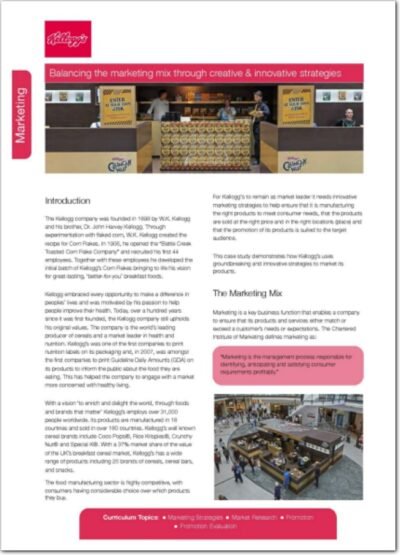Direct costs are expenses that can be directly attributed to the production of specific goods or services. These costs are essential for businesses to understand, as they play a crucial role in determining the overall cost structure of a product or service. In accounting terms, direct costs are typically variable costs, meaning they fluctuate with the level of production or service delivery.
For instance, if a company manufactures furniture, the wood, fabric, and labour directly involved in creating each piece would be classified as direct costs. This clear linkage between the cost and the product makes direct costs a fundamental aspect of cost accounting and financial analysis. The identification of direct costs is vital for accurate financial reporting and budgeting.
By isolating these costs, businesses can gain insights into their operational efficiency and profitability. This understanding allows for better decision-making regarding pricing strategies, resource allocation, and overall financial health. In contrast to indirect costs, which cannot be traced back to a specific product or service, direct costs provide a more straightforward view of the expenses incurred in the production process.
This distinction is essential for managers and stakeholders who need to evaluate the performance of various segments within a business.
Summary
- Direct costs are expenses that can be directly attributed to a specific cost object, such as a product or service.
- Types of direct costs include direct materials, direct labour, and direct expenses.
- Examples of direct costs include raw materials, wages for production workers, and shipping costs for a specific product.
- Identifying direct costs is important for accurately determining the cost of producing a product or delivering a service.
- Methods for calculating direct costs include job costing, activity-based costing, and process costing.
Types of Direct Costs
Direct costs can be categorised into several types, each serving a specific purpose in the production process. The most common types include direct materials, direct labour, and direct expenses. Direct materials refer to the raw materials that are consumed in the manufacturing of a product.
For example, in the automotive industry, steel, rubber, and glass are considered direct materials as they are integral to the production of vehicles. The cost of these materials can be easily traced back to the final product, making them a quintessential example of direct costs. Direct labour encompasses the wages paid to workers who are directly involved in the production process.
This includes assembly line workers, machinists, and any personnel whose efforts contribute directly to creating a product or delivering a service. For instance, in a bakery, the salaries of bakers who prepare and bake bread would be classified as direct labour costs. Additionally, direct expenses may include any other costs that can be directly linked to a specific project or product, such as royalties paid for using patented technology or fees for subcontracted services that are necessary for production.
Examples of Direct Costs
To illustrate the concept of direct costs further, consider a clothing manufacturer. The fabric used to create garments is a direct material cost; it can be quantified and directly linked to each item produced. Similarly, the wages paid to seamstresses who stitch the clothing together represent direct labour costs.
If the manufacturer hires an external designer to create a unique line of clothing, the fees paid to that designer would also fall under direct expenses. Each of these examples highlights how direct costs are integral to the production process and can be traced back to specific products. In the construction industry, direct costs manifest in various forms as well.
For instance, when building a residential property, the cost of concrete, bricks, and timber used in construction are considered direct materials. The labour costs associated with bricklayers and carpenters who work on-site are classified as direct labour. Additionally, any equipment rental fees specifically incurred for that project would be regarded as direct expenses.
These examples underscore the diverse nature of direct costs across different industries and their critical role in determining overall project budgets.
Importance of Identifying Direct Costs
Identifying direct costs is paramount for businesses aiming to maintain financial control and optimise profitability. By accurately tracking these expenses, companies can establish precise pricing strategies that reflect the true cost of production. This is particularly important in competitive markets where pricing can significantly influence consumer behaviour.
If a business fails to account for its direct costs adequately, it risks underpricing its products or services, leading to diminished profit margins or even losses. Moreover, understanding direct costs allows businesses to conduct more effective budgeting and forecasting. By analysing historical data on direct costs, companies can predict future expenses with greater accuracy and allocate resources more efficiently.
This insight is invaluable for strategic planning and can help businesses identify areas where cost savings may be achieved without compromising quality or service delivery. In essence, recognising and managing direct costs is not merely an accounting exercise; it is a strategic imperative that can drive long-term success.
Methods for Calculating Direct Costs
Calculating direct costs involves several methods that can vary depending on the nature of the business and its accounting practices. One common approach is the job order costing method, which is particularly useful for companies that produce unique products or services. Under this method, all direct materials and labour associated with a specific job are tracked meticulously.
For example, a custom furniture maker would record all wood and upholstery used for each individual piece along with the hours worked by craftsmen on that specific order. Another method is process costing, which is more applicable to industries where products are mass-produced in continuous processes. In this case, direct costs are averaged over all units produced during a specific period.
For instance, in a soft drink manufacturing plant, the total cost of ingredients like sugar and carbonated water would be divided by the number of bottles produced to determine the cost per unit. This method simplifies cost allocation but may obscure individual product profitability if not managed carefully.
Difference between Direct Costs and Indirect Costs
The distinction between direct costs and indirect costs is fundamental in accounting and financial management. While direct costs can be traced directly to specific products or services, indirect costs cannot be attributed to any single item easily. Indirect costs include overhead expenses such as utilities, rent, administrative salaries, and general office supplies.
These costs support overall business operations but do not directly contribute to the production of goods or services. Understanding this difference is crucial for accurate financial reporting and analysis. For instance, while calculating the total cost of producing a product, both direct and indirect costs must be considered to arrive at a comprehensive view of profitability.
However, when assessing performance at a granular level—such as evaluating individual product lines—focusing on direct costs provides clearer insights into how efficiently resources are being utilised in production.
How Direct Costs Impact Pricing and Profitability
Direct costs have a significant influence on pricing strategies and overall profitability for businesses. When setting prices for products or services, companies must ensure that they cover not only their direct costs but also contribute towards indirect costs and desired profit margins. If a business underestimates its direct costs during pricing calculations, it may inadvertently set prices too low, leading to financial strain.
Moreover, fluctuations in direct costs can directly impact profitability margins. For example, if the price of raw materials rises due to market conditions or supply chain disruptions, businesses must adjust their pricing strategies accordingly to maintain profitability. This dynamic relationship between direct costs and pricing necessitates ongoing monitoring and analysis to ensure that businesses remain competitive while safeguarding their financial health.
Strategies for Managing Direct Costs
Effective management of direct costs is essential for maintaining profitability and operational efficiency. One strategy involves negotiating better terms with suppliers to reduce material costs without compromising quality. Establishing long-term relationships with suppliers can lead to bulk purchasing discounts or favourable payment terms that enhance cash flow.
Another approach is implementing lean manufacturing principles aimed at minimising waste throughout the production process. By streamlining operations and optimising resource utilisation, businesses can reduce both material waste and labour inefficiencies—ultimately lowering their direct costs. Additionally, investing in employee training can enhance productivity levels among workers directly involved in production processes, further contributing to cost savings.
Utilising technology also plays a pivotal role in managing direct costs effectively. Advanced inventory management systems can help track material usage more accurately, ensuring that businesses only purchase what they need when they need it. Similarly, project management software can assist in monitoring labour hours more efficiently, allowing companies to identify areas where productivity can be improved.
In conclusion, understanding and managing direct costs is vital for any business aiming for sustainable growth and profitability. By employing effective strategies and maintaining a clear distinction between direct and indirect costs, companies can navigate their financial landscapes with greater confidence and precision.
Direct costs are a crucial aspect of business operations, as they directly contribute to the production of goods or services. Understanding and managing direct costs can significantly impact a company’s profitability. In a related article on setting up as a plumber, the importance of accurately calculating direct costs is highlighted. Plumbers need to consider factors such as materials, labour, and equipment when determining their direct costs to ensure they are pricing their services competitively and profitably.
FAQs
What are direct costs?
Direct costs are expenses that can be specifically attributed to the production of a particular product or service. These costs are directly related to the production process and can be easily traced to a specific cost object.
Examples of direct costs
Examples of direct costs include raw materials, direct labour, and direct expenses such as fuel or electricity used in the production process. These costs are directly tied to the production of a specific product or service.
How are direct costs different from indirect costs?
Direct costs are directly attributable to the production of a specific product or service, while indirect costs are not easily traceable to a specific cost object. Indirect costs are often related to overhead expenses such as rent, utilities, and administrative salaries.
Why are direct costs important?
Direct costs are important because they help businesses accurately determine the cost of producing a specific product or service. By understanding direct costs, businesses can make informed decisions about pricing, production processes, and resource allocation.
How are direct costs calculated?
Direct costs are calculated by identifying all expenses that are directly related to the production of a specific product or service. This may involve tracking the cost of raw materials, direct labour, and other expenses that are directly tied to the production process.
 UNISON A3 ePoster Edition 16 "Using promotion to campaign for public services"
UNISON A3 ePoster Edition 16 "Using promotion to campaign for public services"  Balancing the marketing mix through creative and innovative strategies (PDF)
Balancing the marketing mix through creative and innovative strategies (PDF) 

